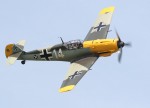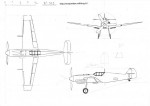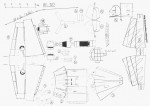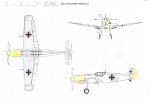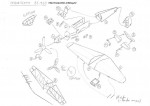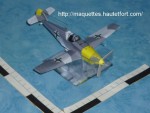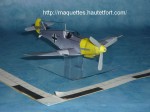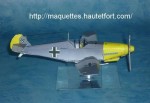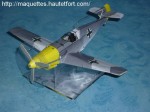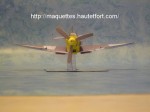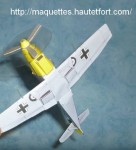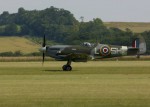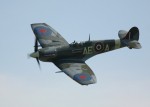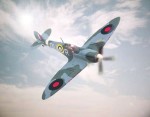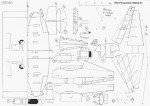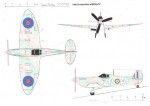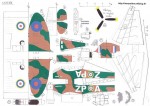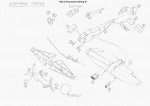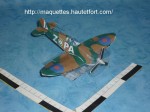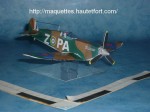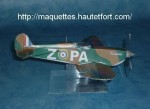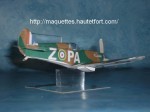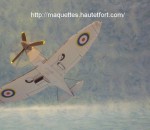Le Messerschmitt Bf 109 est un avion de chasse conçu dans les années 1930 par l'ingénieur allemand Willy Messerschmitt en réponse à un appel d'offre du Reichsluftfahrtministerium (RLM) pour la conception d'un chasseur moderne devant équiper la Luftwaffe naissante. Autour du moteur le plus puissant disponible, un Junkers Jumo 210 à 12 cylindres en V inversé, Messerschmitt dessina la cellule la plus fine possible, reprenant des techniques très novatrices qu'il avait développées pour l'avion léger Bf 108.
Le prototype Bf 109, supérieur à ses concurrents, fut finalement choisi, malgré l'inimitié du ministre de l'Air, Erhard Milch, envers Messerschmitt et employé par la suite pendant la guerre d'espagne au sein de la légion condor puis intensivement durant la bataille d'angleterre où il affronta le Supermarine Spitfire de la Royal Air Force.
The Messerschmitt Bf 109 was a fighter aircraft designed in the 1930s by German engineer Willy Messerschmitt in response to a call for tender of the RLM (RLM) for the design of a modern fighter to equip the fledgling Luftwaffe. Around the most powerful engine available, a Junkers Jumo 210-12-cylinder inverted V, Messerschmitt designed the cell as thin as possible, incorporating techniques he had developed very innovative for the light aircraft Bf 108.
The prototype Bf 109, higher than its competitors, was finally chosen, despite the enmity of the Air Minister, Erhard Milch, to Messerschmitt. and subsequently used during the war in Spain in the Condor Legion then intensively during the Battle of England where he faced the Supermarine Spitfire of the Royal Air Force.
Pour plus d'infos sur cet appareil voir le lien / For more information about this device see the link:
http://www.avionslegendaires.net/messerschmitt-bf-109.php
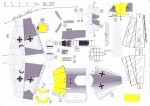 |
|
Pour télécharger le plan 3 vues, des pièces noir et blanc et en couleur et le schéma de montage du Messerschmit BF-109 au 1/66 en pdf / To download the 3 sights plan, black and white pieces and in color and the installation diagram of Messerschmit BF-109 in 1/66 pdf, CLIQUER ICI
Photos d'une maquette construite en juillet 2010/ Photos of a model built in July 2010
CONSIGNES DE CONSTRUCTION :
- Il n'y a pas de train d'atterrissage sur cette maquette.
- Un fil de fer en travers de la voilure est nécessaire pour donner la forme des ailes.
- Le câble d'antenne radio est fait en fil noir et l' antenne en fil de fer.
- Un disque en plastique est mis derrière l'hélice pour une illusion d'hélice tournante.
- 2 petits morceaux de fil de fer sont incrustés dans les ailes pour représenter les canons.
- L'hélice doit être doublé de carton, en plus du disque en plastique optionnel.
BUILDINGS INSTRUCTIONS :
- There is no landing gear on this model.
- A wire across the wing is necessary to give the shape of wings.
- Radio antenna cable is made of black wire and antennae wire.
- A plastic disk is placed behind the propeller for an illusion of rotating propeller.
- 2 small pieces of wire are embedded in the wings to represent the guns.
- The propeller must be lined with cardboard, in addition to the optional hard plastic.
